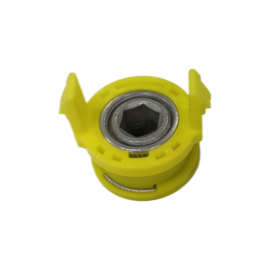| img | Title | Product_type | Pa_d | Pa_l | price |
|---|
The structural feature of closed rivets is that the head of the rivet core is wrapped in the shell. After riveting, the rivet head does not fall off and can be partially sealed.
According to the material and strength grade of the rivets, there are several categories, including aluminum steel round head closed rivets (grade 10/11), all-steel round head closed rivets (grade 30), all-aluminum round head closed rivets (grade 06), all-stainless steel round head closed rivets (grade 51), and aluminum steel countersunk head closed rivets (grade 11).
For the structural design of this type of rivets, please refer to the GB/T 12615 and GB/T 12616 series standards.
Usage scenarios
size
Performance Table
Surface treatment
Surface protection depends on the product material and installation environment requirements. The recommended rivet shell material grades and protection types are as follows::
| Material Category-Shell | Material grade | Material Standards | Connection strength | Surface treatment and protection level
(Based on neutral salt spray test conditions) |
| Mild Steel | SWCH6A
SWCH10A |
JIS G3507-1 | Intermediate: zinc-plated trivalent chromium passivation, 5um or more, 72H no white rust
Heavy: zinc-plated nickel alloy, colorless passivation, 8-25um, 480H no white rust |
|
| Medium Carbon Steel | SWCH22A
SWCH35K SCM435** |
JIS G3507-1 | high | |
| copper* | T2 | middle | Heavy grade: tin plating, 1000H no substrate corrosion | |
| Copper Nickel Alloy* | NiCu | middle | — | |
| Stainless steel* | 304 | Higher | Passivation, 960H without substrate corrosion | |
| Aluminum Alloy* | 5052
5056 |
GB/T 3190 | Lower | Anode, 240H without substrate corrosion |
00001 Note: * This manual does not include blind rivets made of copper and copper-nickel alloy. If necessary, please consult with Bosch R&D and engineering personnel.
00002 Note: ** Material SCM435 is mainly used for the core of ring groove rivets, which is the main connection carrier that bears high tensile and high shear resistance.
Installation Method
1.1 Product installation steps
1) Select a pneumatic or battery-powered rivet gun with matching pulling force, install a nozzle with matching diameter specifications, and adjust the appropriate rivet stroke according to the installation thickness and tool manual;
2) Load the product and perform an empty pull test;
3) Perform a real rivet test on the test sheet metal, as shown in step 1 below.
4) Observe whether the clamping state of the product is normal after installation.
5) (To determine whether the installation fails, please refer to the following article – Product installation failure mode pictures)
1.2 Operation steps
Hold the product or the nozzle close to the tail of the rivet to automatically suck in the nail core and the rivet flange surface to ensure that it is close to the nozzle. Insert the tool into the installation hole in a direction perpendicular to the sheet metal plane and close to the sheet metal surface, then pull the trigger to start riveting until the nail core breaks. At this time, one riveting action ends, and then the next working cycle is carried out.







